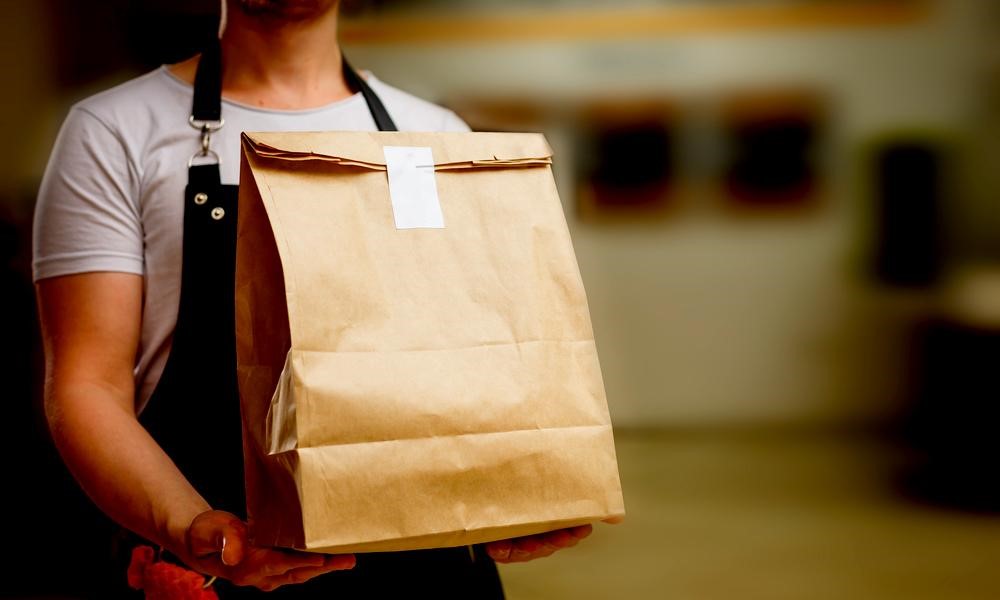The restaurant industry has been changing with a massive shift in the last year or so in dining habits.
Food delivery has been a major contributor to this shift which was further fast-tracked due to the COVID-19 pandemic which found all restaurants having to close their doors to dine-in customers.
In order to keep businesses afloat and to adapt to the new trend of food delivery, new delivery and takeout businesses emerged.
Enter dark kitchens!
But what are dark kitchens? What can they offer your business? And how can you optimize the process to get the most out of this new setup?
A dark kitchen is a single concept with many names and here is everything you need to know.
Order Management for Dark Kitchens In a Nutshell
If you’re pressed for time and don’t want to read the entire post, here’s the nitty-gritty of order management for dark kitchens.
How to Manage Orders In Dark Kitchens for Optimal Results?
For effective order management for dark kitchens, make sure that your inventory isn’t depleted. Sadly, with multiple brands working under the same roof, inventory management for dark kitchens becomes a major issue.
Some operators go on a whim and commit inventory/ stock units to memory, or a piece of paper. That’s good, for as long as you are running a single brand. But, how about managing multiple brands through different aggregators and a flood of orders to keep up with?
To handle such issues, integrate a smart POS system to manage the stock and inventory at the right time. You don’t want to overstock, and also run dry. In this regard, pos tools for dark kitchens keep the inventory side of things at a self-sustained level.
For example, Blink Co. has a flexible Pos system that dark kitchen managers can use to overlook daily stock consumption, requirements, and other scenarios from a single dashboard. Even if you are managing multiple food brands under one roof, you can control everything through a smart system of checks and numbers that keep a tab on inventory levels.
How to Market Your Dark Kitchen?
With the order management for dark kitchens, marketing has become a big issue since these establishments do not have a typical dine-in space. Everything is cooked to fulfill online/ offline orders through a delivery-only model.
Since customers cannot walk in, you need to rely on marketing through food aggregators’ marketing campaigns, social media marketing campaigns, and SMS marketing.
Food aggregators, help you to push your order management for dark kitchens marketing campaigns on relevant mobile app, where tons of visitors can get a scoop of your latest discount offers. Likewise, you can market your name-brand restaurant services through its social media page with the help of paid ads.
For SMS marketing, you can either pay 3rd party marketers to run the campaign for you. However, we recommend Blink Co. for order management for dark kitchens sms marketing.
Since your online food customer data is collected over time, Blink Co. can easily help you to set up viral sms marketing campaigns that’ll ping your customers directly. It’s a no-fuss strategy with maximum results, as people are known to readily react to sms alerts more often as compared to emails and social media inbox messages.
Order Fulfillment Process in Dark Kitchens:
Order fulfillment is another aspect of order management for dark kitchens.
Every single order is treated and processed like a standard order – except that it’s meant for delivery or takeaway (sometimes). However, some of the orders can belong to another brand working side-by-side with you in the same dark kitchen. If you own that brand, that’s another plus point, as you will only have to designate a bunch of chefs to take care of the order, while your main team can focus on primary brand order fulfillment processes.
But a smarter solution is to deploy a pos system with a kitchen display feature (also known as KDS).
Every time, a new order comes in, it is directly reverted to the Kitchen Display Panel where concerned staff members can get started without any further delay.
Once the order is ready, and awaiting delivery, your chef can mark it as ‘Order Completed’ and move on to the next batch for preparation.
Meanwhile, your packaging staff can pack the order and send it to the delivery station.
To integrate a pos tool in your Kitchen Display System/ Panel, feel free to contact Blink Co. for immediate help.
Alternatively, you can visit Blink for Restaurants Page to schedule a demo.
What are Dark Kitchens?

The food industry is vast and ever-evolving. With restaurant delivery on the rise, a new form of takeout and delivery model has emerged known as dark kitchens. These kitchens are commercial kitchens that produce food solely for delivery purposes.
These virtual kitchens while containing kitchen equipment lack any sort of dining area or space to allow customers to eat at the location.
Order management for dark kitchens focus only on delivery, using delivery apps or online ordering systems to get orders and prepare the food once those orders come in. These apps also offer the option for takeout thus allowing customers to pick up the prepared food.
The main differentiating factor of dark kitchens to traditional models is the reduced operating costs. Most importantly, you can leverage dark kitchens to reduce wasteful overheads and we will discuss this detail in the subsequent sections.
These kitchens are creating a whole new ecosystem of food delivery designed to cater directly to online customers.
The Need and Rise of Order management for dark kitchens
Technology has been the harbinger of change that has ushered a new era of dark kitchens. Change has been in the air for the last decade or so as technology changes our habits and consumer preferences.
COVID has further accelerated the trend towards dark kitchens as businesses grapple with the pandemic.
Businesses need to evolve with the changing context & challenging their business fundamentals.
The most prominent reasons why the food business has adapted to dark kitchens include:
- The advantage of dark kitchens is reducing the cost of doing business substantially.
- When it comes to technology, millennials are fish in water. Changing consumer market trends centered around technology and at-home convenience.
- With smaller delivery lead times and customer support offered 24/7 by many companies, nothing short is expected from the food industry.
- The success of online ordering and delivery platforms like Deliveroo, Uber Eats, and Doordash or your favorite food provider’s own app.
- But the drastic rise in this model of the kitchen has to be partial if not fully accredited to the Global COVID-19 pandemic.
The global online food delivery market was at $91 billion in 2018 while it is expected to grow all the way upto $164 billion in 2024.
The industry’s meteoric rise has seen several online ordering companies popup. In the UK alone Deliveroo, Uber Eats and Just Eat are operating and competing for the multi billion dollar industry.
To offer more food delivery services for areas with unmet demand companies like Deliveroo started providing remote dark kitchens to restaurants.
These facilities which consisted of portable trucks and window less containers were criticized by some when they got to know that their food was being produced in these setups.
Despite the negative response dark kitchens are becoming increasingly popular.
There are a variety of options which startup companies are taking to offer only a delivery only food service.
Some are just focused on setting up and hiring the right urban dark kitchens.
Why Open a Dark Kitchen?
There is no denying that this model of dark kitchens has a lot to offer both restaurants, consumers, and delivery platforms alike.
Here are some of the benefits that can be gained from adopting the dark kitchen model and why you should consider opening such a model for your own brand.
- Lower Costs
At its core, the biggest benefit is the reduced cost of running such businesses.
Such kitchens are cheaper to run due to their lower operating costs.
Kitchens involve running a kitchen without having to run a dining area. Thus, you are not required to invest in tables, chairs, or other elements that are required to create a dine-in ambiance.
You also cut down on costs incurred from having to pay salaries for employees. Without a dining area, you will only require kitchen staff to be employed thus further eliminating costs for your restaurant.
Furthermore, you are also cutting down on rent costs. Not only do you not need a big space since you are only running a kitchen, but you also subtract the need to have your restaurant in a location that is a high-traffic area and consequently more expensive. This significantly cuts rental prices.
“Cloud kitchens can break even and pay back at a much faster rate, in less than a year and under 18 months, respectively,” says Rashmi Daga, Founder, and CEO, Fresh Menu.
Further benefits depend on the decision by the dark kitchens between food aggregators and their own app which could help businesses save cost and improve their margins helping in breaking even earlier which allows them to work on their brand loyalty. This allows restaurants to spend money where it matters the most.
Blink is a platform that helps restaurants set up their self-branded and white-labeled apps easily. Set up a call with one of our product specialists right now and start your positive trajectory now.
- Increased Reach through new Marketing Channels

Such restaurants that follow the dark kitchen model have multiple marketing channels for their brand through which they can reach out to their customers in a more sustainable way.
Delivery apps and changing consumer trends have changed the food ecosystem providing new marketing channels to business owners.
While these delivery apps do act as a front face for your restaurant, they do have an associated cost that will have to be accounted for in your business numbers. Trends show that such apps have strengthened their control over the delivery business which has resulted in them increasing their charges and leaving the kitchens to fend for themselves or lose business.
All eggs in one basket? Create your own app with Blink and improve your bottom line. Talk to one of our experts today and get a free consultation.
- Automation

Dark or virtual kitchens also benefit from increased efficiency. This is thanks to the automated sales and ordering processes that such kitchens incorporate using apps like Blink. Modern technology, including computer vision and AI, is helping restaurants to automate the process of cooking, courtesy the intelligent equipment like a robotic wok and dum machine, and automated tawas and auto fryers.
These kitchens can focus on food quality which is essential for today’s consumers. There is no need for such kitchens to hire resources specifically for servicing and rather concentrate entirely on the food preparation and quality controls.
- Flexibility
If you had a traditional brick and mortar restaurant, the fixed costs would be much higher with all the restrictions and the fixed costs would have been painful on your bottom line.
We have to keep paying wages and paying rent. This gives occupants of dark kitchens total flexibility, from running a burger brand to a pizza or dessert brand, without any additional cost.
- Technology
Modern cloud technologies use ingenious automation to connect and streamline virtually every aspect of restaurant food delivery and dark kitchen operations from online ordering to their back-of-house management.
Data is increasingly being adopted to improve service delivery control. For example, when predicting service peak loads embedded prediction tools within apps like Blink can help you estimate an expected order delivery time subject to the kitchen workload, lack of drivers or traffic – and if you have more than one outlet operating it can choose the right one to fulfil the delivery order.
Other uses of Blinks intelligent AI and sophisticated algorithms include automatically assigning orders amongst delivery drivers and by taking into account food preparation and delivery times. You can also automatically forecast sales to help optimise staff rotas, kitchen preparation planning and purchase ordering.
Cloud-based platforms, such as Blink, now make it possible to set up a restaurant food delivery and dark kitchen business quickly using the latest technologies.
To setup a free consultation call with one our experts (CTA: Schedule a Call)
You can have your own branded online ordering solution linked to your own restaurant management system, including kitchen management, customer management, delivery, stock taking, staff scheduling and financial control. It’s simple to manage your own drivers or third-party aggregator delivery orders, taking advantage of a connected ecosystem.
Challenges of Operating a Dark Kitchen

There are certain unique challenges that should be considered about the ever-growing popular virtual kitchens.
Bringing a strong brand for a restaurant that relies solely on online visibility can be difficult. In-person interactions are arguably a major part of creating strong customer relations and incurring customer loyalty.
The element of emotion and human touch can often be difficult in such a situation. However, doing so with food and delivery is something that is possible, and essential in order to create that customer base and maintain loyal customers.
There is also increased competition as these types of kitchens become more and more commonplace. Making your brand stand out thus becomes increasingly difficult.
Technology plays a central role, and therefore you need a certain amount of tech-savviness to give your restaurant a chance to make it in the industry.
We will discuss how you can simplify the use of technology and even use it to your advantage to create a loyal customer base below.
Dark Kitchen Business Models

Dark kitchens can be run through a number of different setups. There is no one golden model to choose from and that is why such kitchens are able to withstand the competition and be functional all across the world.
Your setup for your kitchen depends on different factors including location and partnership opportunities, as well as what works best for your brand.
The aim of the game at the end is the same for each one, that is to get orders, prepare the food, and then pack and deliver the food to your customer.
Here are some of the most common business models that have been adopted for virtual kitchens.
The Basic Virtual/Dark/Ghost kitchen
The standard operation model includes a single brand either owning or renting a separate kitchen location without a dine-in area. Since only one brand is using the kitchen, this type of operation relies on a particular kind of cuisine. They also usually rely on delivery channels or staff members to manage orders and delivery.
The Multi-Brand Kitchen Model
This setup, also known as a cloud kitchen, is great to keep operational costs down. Different brands function under one parent company sharing a kitchen location. Each brand has its own identity and based on data analytics supply the most popular meals per the location’s demand.
Outsourced Kitchen Model
The outsourced kitchen model is probably the newest setup type in this list and involves a restaurant outsourcing almost any, or sometimes every, process. They do however usually keep putting the finishing touches on the order for themselves. This model involves partnering with other companies that specialize in food specialization, order processing, and delivery. With this setup, the restaurant company can focus on ensuring their product is standout and meets the requirements of what the consumer wants.
Aggregator-Owned Kitchen Model
Delivery aggregators also play a part in the ghost kitchen models. They offer kitchen space and minimal infrastructure that can be rented by restaurants to run their businesses. The only process the restaurant needs to handle is the preparation of the food. They rely on the delivery aggregator’s online ordering and menu creation platform, as well as their fleet for deliveries. This setup can involve a single restaurant using a single location or even have different smaller kitchens operating in one large kitchen space thus allowing multiple restaurants to be cooking at any given time.
Takeaway Kitchen Model
Similar to the traditional model, a takeaway kitchen model follows the same setup except it also offers customers the option to pick up orders rather than simply providing delivery. Dine-in options are still not available. This way customers can choose to come and wait for their food themselves, see how the kitchen is run, and even interact with some of the restaurant employees. Thus, this setup allows restaurants to bridge some of the gaps created by such setups in creating customer connections. Although this hybrid method is great it does require more operational cost than other models since you may have to invest in certain décor and a larger space even without the dining area.
Popular Dark Kitchens in the MENAP Region

Here are some popular examples of the remote kitchen models in action across the MENAP region:
- Dubai-based “Kitopi”
- “Hot Kitchen” in Durban
- UAE’s “Cloud Restaurants”
- South Africa’s “Darth Kitchens”
- “EATER.co.za” in Cape Town
- Pakistan’s “Byte”
- “Mexican Food Cartel” in Joburg
How Blink Can Help You Make the Most of your Dark Kitchen Model
If you are thinking of hopping on to the ghost kitchen bandwagon or have already started your endeavor but are seeking ways to streamline your processes and make the most out of the model, Blink has just the solution for you.
The Blink platform is offered as a Software-as-a-Service and is an online ordering solution. Blink, also sometimes referred to as BlinkCo, provides online ordering solutions for both mobile apps, including both iOS and Android, as well as web interfaces.
The solution offers a secure and scalable backend. You get access to a white label pre-designed mobile application and website which is catered to your brand.
While such kitchen models such as the virtual/dark/ghost kitchen models often use delivery aggregators to run their ordering and manage the online ordering process, there is a lot to miss out on when you choose this route.
Creating your own brand with a mobile application and website can offer you a great deal but can be difficult to put together, which is where Blink comes into play.
You can run your entire online ordering system without giving a cut to the delivery aggregator thus cashing in on the full extent of the cost optimization that such kitchen models offer.
Moreover, as mentioned above, such kitchens often lack the customer connection needed to create a lasting loyal relationship. Blink can help you bridge this gap. With your own website and app, you can create offers and loyalty programs that can encourage customers to choose your restaurant.
What’s more, is that owning your online ordering system gives you access to all user data that can be used to cater to the wants and demands of your consumers and boost sales of your restaurant.
With real-time inventory, order management, dispatch management, and fleet tracking Blink can help you manage your entire process from receiving an order from a customer all the way to delivery.
The Dynamics of Dark Kitchens: How They’ll Grow in 2021 & Beyond
There are many reasons why you should consider looking into the dark kitchen model.
Here are some statistics that further reiterate the way that these kitchen models are the future of the food and beverage industry:
- Research shows that “Ghost kitchens are forecast to hold a 50% share of the drive-thru and takeaway foodservice markets worldwide, respectively, by 2030.”
- Checkout.com, a UAE-based global payment solution found that of those surveyed the second most popular category of products to be ordered online is food delivery making up to 50% more than the year before.
- The Global market size of Dark kitchens was valued at over 40 billion US dollars in 2019 with expectations to reach 71.4 billion US dollars by 2027.
In order to get the most out of this model and take advantage of this fast growing trend why not get in contact with one of our restaurant consultants at Blink, or request a demo to see how Blink can help your business.




